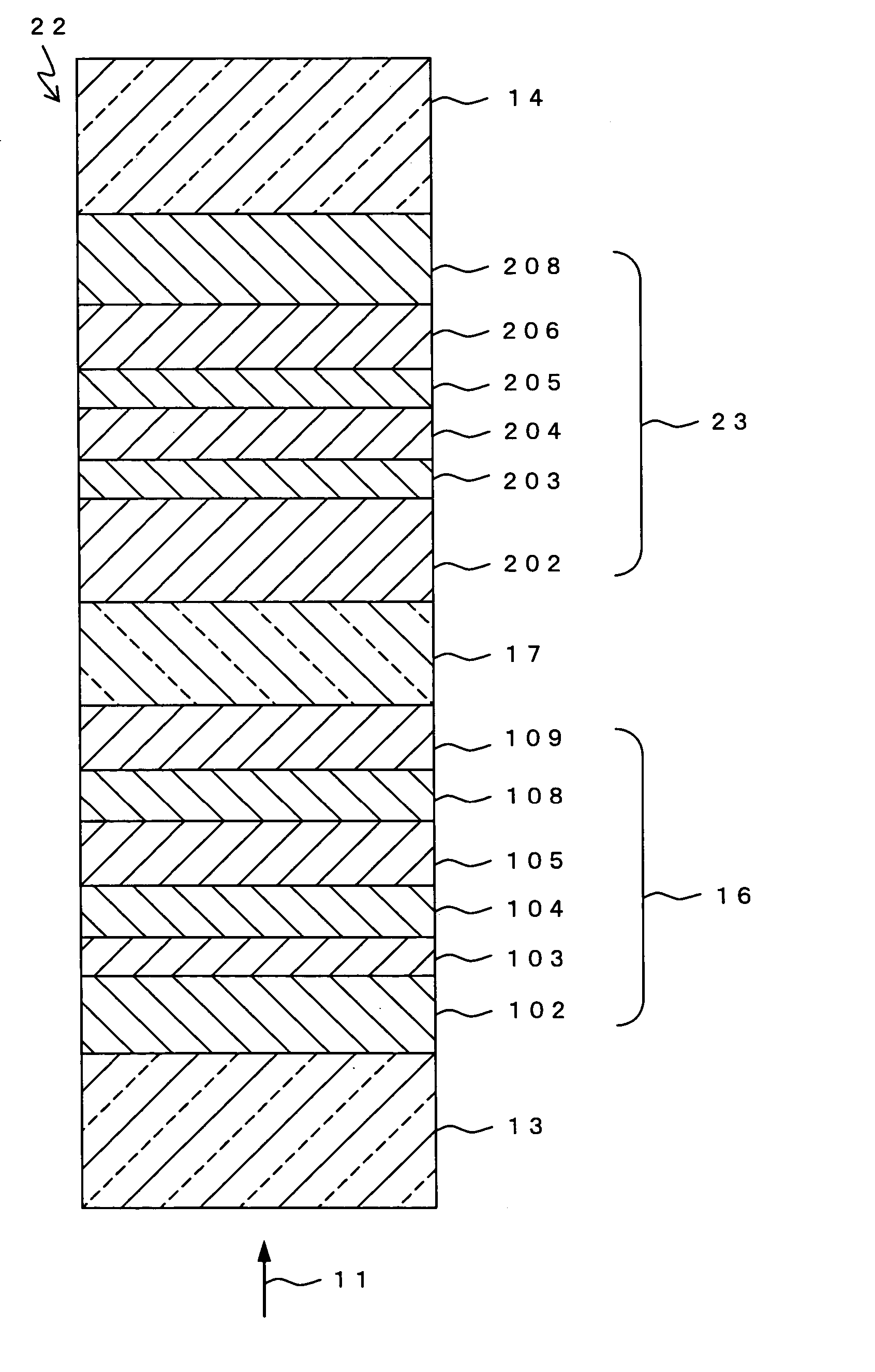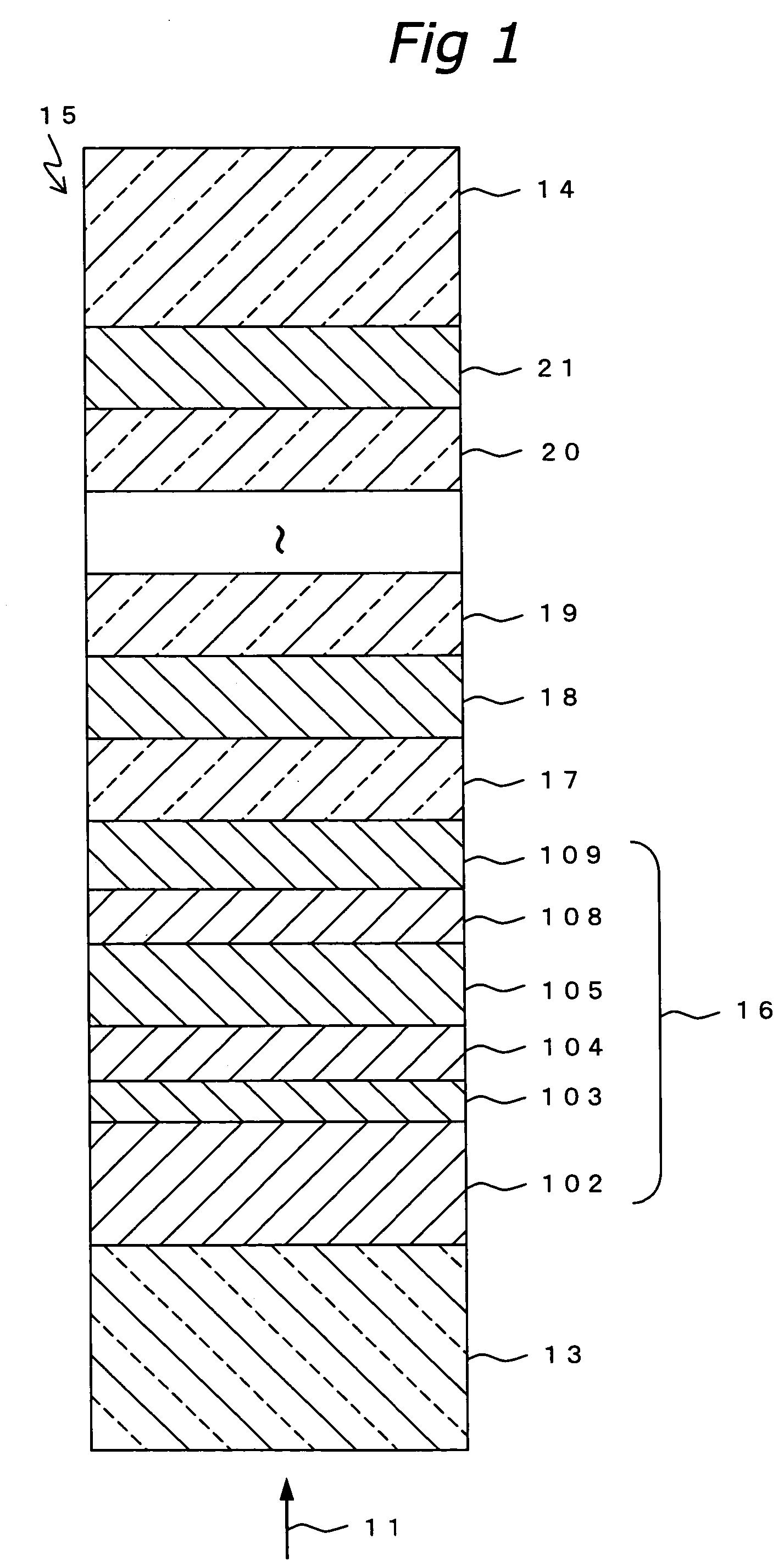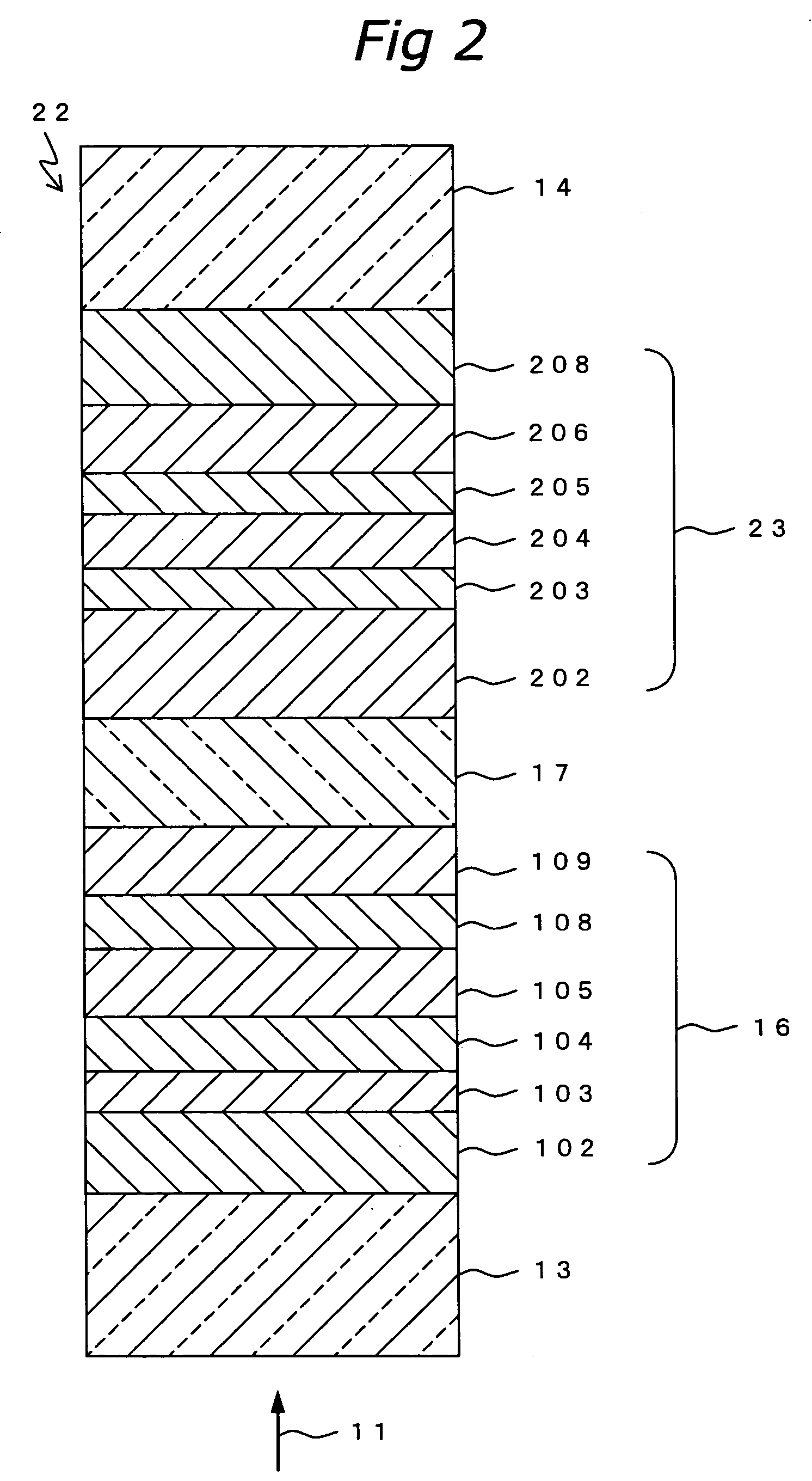Information recording medium and method for manufacturing the same
a technology of information recording medium and manufacturing method, which is applied in the field of information recording medium, can solve the problems of reducing the distance in which atoms can move, the number of crystalline nuclei formed when the recording layer is crystallized, and the relative short amount of time available for irradiation of laser beam onto the recording layer, etc., and achieves improved crystallization ability of the recording layer, good repeated rewriting ability, and low transmission rate
- Summary
- Abstract
- Description
- Claims
- Application Information
AI Technical Summary
Benefits of technology
Problems solved by technology
Method used
Image
Examples
embodiment 1
[0075]An information recording medium according to a first embodiment of the present invention will be described below. A partial cross section of an information recording medium 15 according to the first embodiment is shown in FIG. 1. The information recording medium 15 is a multilayer optical information recording medium that can record and reproduce information by means of a laser beam 11 irradiated from one side thereof.
[0076]The information recording medium 15 includes N (a non-negative integer in which N≧2) sets of information layers 21, 18 and first information layers 16, and a transparent layer 13, that are sequentially formed on a substrate 14 via optical separation layers 20, 19 and 17 and the like. Counting from the incident side of the laser beam 11, the first through (N−1)th sets of first information layers 16 and information layers 18 are optically transparent information layers (hereinafter, the Nth set of information layers from the incident side of the laser beam 11...
embodiment 2
[0126]In a second embodiment of the present invention, an information recording medium is composed of two sets (i.e., N=2) of information layers in the multilayer optical information recording medium according to the first embodiment of the present invention. A partial cross section of an information recording medium 22 according to the second embodiment is shown in FIG. 2. The information recording medium 22 is a two-layer optical information recording medium that can record and reproduce information by irradiating the laser beam 11 from one side thereof.
[0127]The information recording medium 22 is made up of a second information layer 23, an optical separation layer 17, a first information layer 16 and a transparent layer 13 that are formed on the substrate 14 in this order. The substrate 14, the optical separation layer 17, the first information layer 16 and the transparent layer 13 can be made of the same materials as described in the first embodiment. In addition, the shapes an...
embodiment 3
[0158]A third embodiment of an information recording medium according to the present invention will be described below. A partial cross section of an information recording medium 27 according to the third embodiment is shown in FIG. 3. The information recording medium 27 is a multilayer optical information recording medium that is similar to the information recording medium 15 described in the first embodiment, which can record and reproduce information by irradiating the laser beam 11 from one side thereof.
[0159]The information recording medium 27 includes N sets of first information layers 16 and the information layer 18 that are formed sequentially on the substrate 24 via the optical separation layers 17, 19 and the like, and the information layer 21 formed on the substrate 26 and adhered via an adhesive layer 25.
[0160]The substrate 24 and the substrate 26 are transparent and disk-like substrates similar to the substrate 14. The substrate 24 and the substrate 26 can be made of a ...
PUM
 Login to View More
Login to View More Abstract
Description
Claims
Application Information
 Login to View More
Login to View More - R&D
- Intellectual Property
- Life Sciences
- Materials
- Tech Scout
- Unparalleled Data Quality
- Higher Quality Content
- 60% Fewer Hallucinations
Browse by: Latest US Patents, China's latest patents, Technical Efficacy Thesaurus, Application Domain, Technology Topic, Popular Technical Reports.
© 2025 PatSnap. All rights reserved.Legal|Privacy policy|Modern Slavery Act Transparency Statement|Sitemap|About US| Contact US: help@patsnap.com



